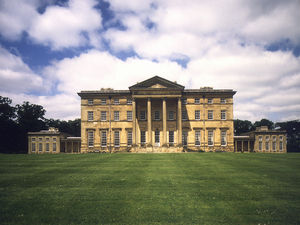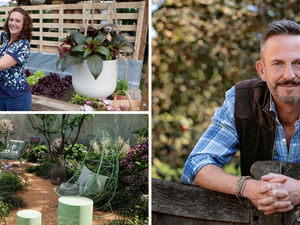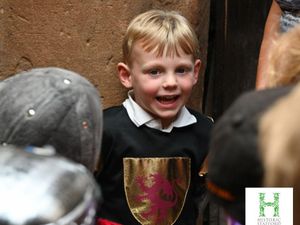Wildlife Photographer of the Year Exhibition opens in Wolverhampton
Photos of some of the most breathtaking sights in the natural world are on display in Wolverhampton as part of a world-renowned exhibition.
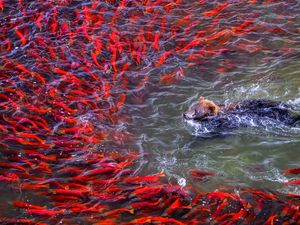
The Wildlife Photographer of the Year Exhibition, which is on loan from London's Natural History Museum, opened at Wolverhampton Art Gallery on Saturday.
It showcases the winners and nominees of this year's competition, recognising the best of nature photography across the world.
This year's honoured photographs depict nature in all its glory, from its most beautiful to its most cruel sights.

One of the most extraordinary images in the whole collection is Ndakasi's Passing by Brent Stirton.
This heart-stopping photo shares the closing chapter of the story of a much-loved mountain gorilla.
Brent photographed Ndakasi's rescue as a two-month-old after her troop was brutally killed by a powerful charcoal mafia in 2007.
Here, he memorialised her passing as she lay in the arms of her rescuer and caregiver of 13 years, ranger Andre Bauma.
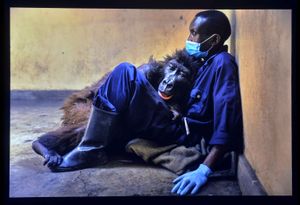
Ndakasi was the only survivor of the attack in 2007, when she was found clinging to her mother's dead body. Andre used his body warmth to comfort and keep the youngster alive until morning. So began a relationship that lasted all Ndakasi's life.
Andre said: "It was Ndakasi's sweet nature and intelligence that helped me to understand the connection between humans and [other] great apes and why we should do everything in our power to protect them."
As a result of unrelenting conservation efforts focusing on the daily protection of individuals, mountain gorilla numbers have quadrupled to more than 1,000 in the last 40 years.
Jen Guyton, photojournalist and judge said: "One of the most important roles that photography can do is convey emotion. This image does that to an astounding degree - it's pure emotion. Images like this can be truly effective at inspiring change."
Another stand-out of the collection is of a snow-covered deer in Richmond Park.
The red deer stag is utterly striking in contrast to the white flurries of snow dancing around him, but there's someone just as remarkable behind the camera.
Joshua Cox, who took the gorgeous photo of the stag, was only six years old when he took the award-winning photo - which has now been seen around the world.
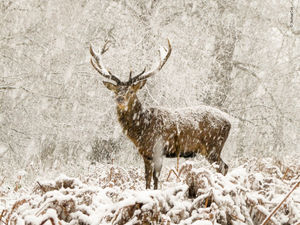
On the more horrifying side of nature's spectrum is The Bat-Snatcher, by Mexican photographer Fernando Constantino Martínez Belmar.
Fernando waited in the dark with a red light, eyes focused on a Yucatan rat snake which was poking out of a crack in a cave.
He had just seconds to get the shot as the snake pounced, snatching a bat out of mid-air before retreating into its crevice with its prey.
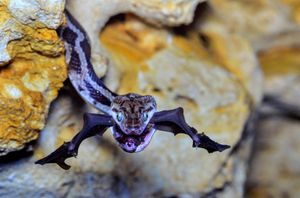
Even more remarkable about this act of nature is that neither creature can see the other. The bats can pinpoint the rat snakes by using echolocation while the snakes can feel the movement of the bats as they fly past.
Sugandhi Gadadhar, wildlife filmmaker and judge, said: "What made the image for me is the timing - the speed and alertness of the snake, the bat with its mouth left open and both predator and prey half-hung in air."
Another extraordinary image is Polar Frame by Dmitry Kokh, which was highly commended in the category of animal portraits.
This otherworldly photo captures a polar bear taking over an abandoned settlement, which had been deserted since the break-up of the USSR in the early 1990s.
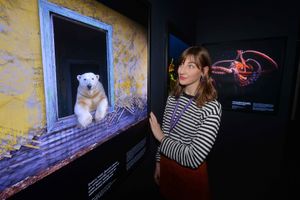

While on a boat sailing past the small, uninhabited island of Kolyuchin in the remote Russian Far East, Dmitry was astonished to see more than 20 polar bears exploring the ghost town.
It was too dangerous to land, so the Russian photographer used a low-noise drone to document the surreal experience.
Polar bears are extremely inquisitive and will often investigate abandoned places in search of food.
With climate change reducing sea ice, it is becoming increasingly difficult for polar bears to hunt, pushing them to move closer to human settlements to scavenge.
However, the overall winner of this year's competition was Karine Aigner for her photo - The Big Buzz.
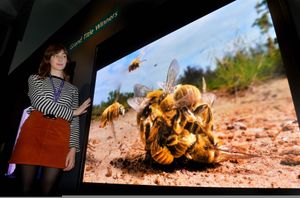
Taken on a macro lens, Karine captured a ball of male cactus bees, spinning across the sand of a Texas ranch, all of whom are intent on mating with the single female in the centre.
Like most bees, cactus bees are threatened by habitat loss, pesticides and climate change, as well as farming practices that disrupt their nesting grounds.
Sugandhi Gadadhar, wildlife filmmaker and judge said: "In today's world, where we struggle to grab the attention of the policy makers towards even big mammals, this image helps in bringing the spotlight to one of nature's most important creatures - bees."
To marvel at these awe-inspiring photos in real life, visit The Wildlife Photographer of the Year Exhibition, which is at Wolverhampton Art Gallery until Christmas Eve.
The gallery is open from 10.30am-4.30pm on weekdays and Saturdays, and 11am-4pm on Sundays.
Tickets are £5.50 for adults and £3.50 for children, plus a booking fee. Children under three go for free. A family ticket for up to five people (must include one child) is £14.50 plus booking fee.

